Puppies will bite and tug on the leash because they’re excited and immature and trying to figure out the whole leash-walking concept.
When older puppies or adult dogs bite the leash, it’s obnoxious and sometimes escalates to aggressive leash shaking. Some dogs will even jump up and nip the owner’s clothes or worse.
This can be dangerous and scary.
I’ve received several emails about this problem lately. So I have a favor …
Please leave your suggestions or questions in the comments because these discussions are really helpful for others.
QUICK RECOMMENDATION: My puppies have drawn blood with their teeth many times. The Milunova Pupr Pals™ Dog Toy is a plush squirrel puppet toy that helps to protect your hands from those sharp puppy teeth during play.
What to do when your dog bites the leash while walking
The following is my list of ideas on what to do if your dog bites and tugs at the leash.
I recommend you read over the post and then pick and choose what might work for your situation.
Also, get help from a professional trainer if you need it. It’s scary when your dog starts biting and jumping at you. What starts out as play or mild frustration can quickly escalate to real aggression. Even with a small dog, this can become a serious problem.
I divided this article into 3 sections:
- Determining why the dog bites the leash.
- Tools that can help stop your dog from biting the leash.
- Additional ideas and advice.
*Enjoying this article? Get realistic dog training tips emailed once a week. Click Here
First, determine why does my dog bite the leash?
Biting on the leash is often related to:
- Excitement!
- Frustration (Bored with the walk, bored with training, can’t get to that other dog)
- Pent-up energy or lack of exercise
Here are six examples why a dog might bite the leash, but they’re all related to excitement, frustration or energy. See if any of these describe your dog.
1. The dog is full of energy or immature and bites the leash
The dog doesn’t know what to do with his energy, so he bites the leash.
If this sounds like your dog, look for ways to increase his exercise in general. Perhaps longer walks more frequently or visiting the off-leash dog park. Use a dog backpack to give your dog a “job” and burn more energy.
See my post: Why exercise is more important than training
2. The dog bites the leash out of excitement
She’s tugging on the leash because she’s excited! “Let’s go!” she says. You might find that your dog bites the leash only when you start running or picking up the pace – that’s because she’s excited.
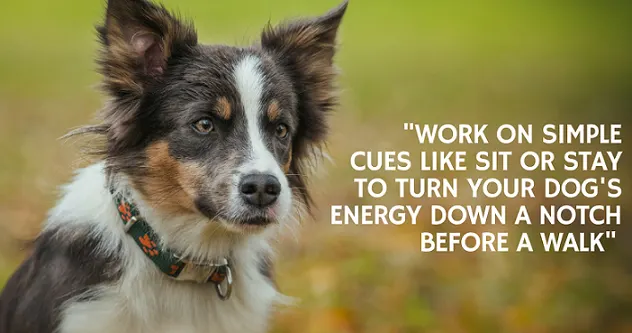
Perhaps playing fetch or tug (with a toy) in the yard right before your walk might help. Or, the opposite, work on some simple cues like sit or stay to turn your dog’s energy down a notch before a walk. Use high-valued treats if needed.
3. The dog doesn’t want the walk to end so she bites the leash
Some dogs bite at the leash because they’re not ready to go home!
Try changing your route so your dog doesn’t anticipate when the walk will end. You could turn around randomly and pass the house or go a totally different direction than you normally do.
Towards the end of the walk, use treats to work on simple behaviors like sit/stay to help calm your dog.
*Enjoying this article? Get realistic dog training tips emailed once a week. Click Here
4. The dog is super excited to be home after a walk
Some dogs bite and tug on the leash because they’re excited to be home! Instead of letting him run around after your walk, try working on some “calming” commands like down/stay and then calmly putting him in his kennel with a bully stick or Kong toy for some quiet time.
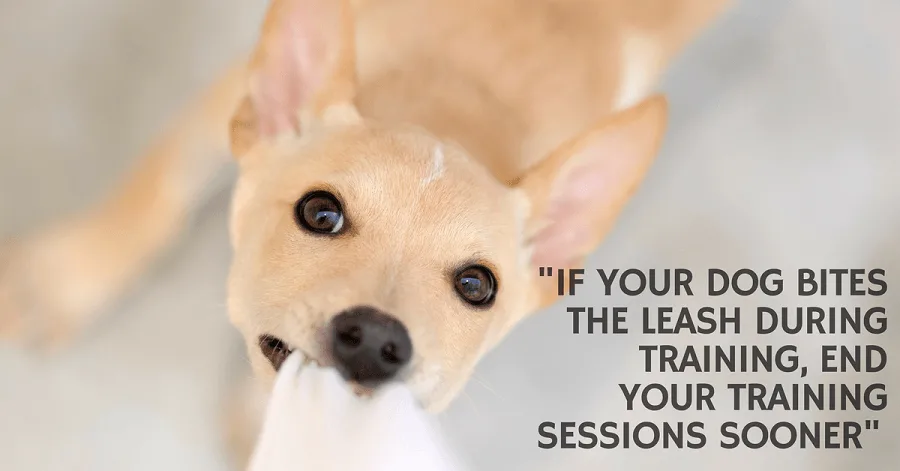
5. The dog is frustrated or bored during training so she bites the leash
If your dog bites the leash during training, end your training sessions sooner or take more breaks.
My dog Remy will sometimes throw a “tantrum” in obedience class by jumping on me and grabbing the leash. I know he’s tired or bored when this happens so we walk away for a few seconds and then re-group.
See my posts:
6. The dog bites the leash when he sees another dog
This is likely excitement or frustration.
A lost of dogs feel excitement when they see another dog. They might think, “Yay! Another dog! I want to go say hi, sniff and play!”
And, when they can’t get to that other dog fast enough, they feel some frustration and therefore start biting at the leash.
For other dogs, seeing another dog will trigger some fear or nervousness.
If that’s the case, your dog might actually want to get away from that other dog or she might want to scare it away before it can hurt her.
Therefore, she might start biting at her leash due to this frustration of feeling “trapped.” Due to the leash, she’s not able to move towards the other dog or away from the other dog.
You can help by being proactive and alert and moving away from other dogs before your dog has a chance to start biting at the leash. Give her high-valued treats before she has a chance to react.
7. Your dog bites the leash while running
Again, this is likely excitement! Your dog is simply biting the leash in response to this excitement of moving faster.
You can try telling your dog a firm “no” when he bites the leash. You can also reward with high-valued treats when he is NOT biting the leash. Or, try handing your dog a toy or ball to hold onto instead of the leash.
Finally, using a chain leash temporarily or a bitter apple spray can help. (More on that below.)
Most dogs get over this burst of excitement if you just ignore it and keep moving. If you run more regularly, they will get used to the faster pace and will be less likely to bite the leash.
8. Does your dog have to go to the bathroom? Is he hungry?
Sounds silly but sometimes the dog is just trying to communicate something simple to you.
For example, Remy was suddenly jumping at me and biting me while we were seated in a dog friendly brewery … turns out he had to poop really bad! Thank goodness I decided to take him out for a quick walk.
*Enjoying this article? Get realistic dog training tips emailed once a week. Click Here
Tools to stop your dog from biting the leash
Here are several tools that can help stop your dog from biting the leash. Pick and choose what might work for your unique dog.
1. A chain leash or chew proof leash
Dogs generally don’t like to bite on chains or cable. Watch your fingers with these leashes though!
You do not want to get your finger or your dog’s paw caught in a chain. Remy chewed on his leather leash as a younger puppy. A chain leash put a stop to that!
Order a chew proof cable leash here.
2. A muzzle to stop dog from biting leash
This may be extreme for some of you but not for others. It’s likely only temporary. You can train your dog to accept the muzzle by putting it on, taking it right off and giving a treat.
Or if you have a basket muzzle you can put some peanut butter in it. Make it fun for your dog, not a punishment. Order a soft muzzle here.
3. Gentle Leader or Halti
A Gentle Leader fits over the dog’s muzzle and can give you more control. Introduce it slowly and reward your dog.
Or consider a martingale training collar. Find the right collar that gives you the most control of your dog. A harness generally does not give you the most control of a dog that jumps or bites the leash.
4. Dog backpack
To give your dog a “job” and something to focus on. This also helps drain energy. I recommend RuffWear.
5. High-valued treats
Treats will help some dogs focus. Try to put the leash on and off your dog when he is calm. Ask for a sit/stay before and after you leash your dog. Then give a treat.
If you can recognize when he’s about to have an “outburst” try working on some quick, simple tricks or commands for treats to switch his brain to something else. We recommend Wellness Well Bites.
6. Bitter apple spray to stop leash biting
The spray won’t harm your dog and usually they don’t like the taste. Spray a bit on the leash as a deterrent. Unfortunately, you might get it on your own hands. You could wear gloves.
7. Electronic collar with a remote
Find someone who can help you with this if you’re not experienced. Put the e-collar on a low setting and correct the instant she jumps on you or bites the leash.
It should be one quick correction. Then reward when she stops. Email Lindsay@ThatMutt.com if you need help with e-collar training.
8. A tug toy vs. biting the leash
Offer the toy to your dog as an alternative to tugging the leash. Or, give her a ball or other toy. If her mouth is full she’s not going to tug the leash. (Sometimes this can backfire and make the dog even more riled up. Know your dog.) I like the Mammoth brand.
Other ideas to stop your dog or puppy from biting the leash
Here are some additional training ideas to stop your dog from biting the leash or shaking the leash.
1. Try a firm ‘no’ but don’t correct over and over
If your dog is sensitive, you might be able to give a firm “no” and a quick tug correction on the leash with a command like sit. This might snap him out of it. To be honest, I’ve even bopped my dog on the nose for jumping and nipping at me.
On the other hand, repeatedly tugging and correcting your dog will likely get him even more excited or aggressive. Instead, try gently and calmly pulling up on the collar until he calms down if you are comfortable doing so.
You can also see if ignoring your dog works by truly showing no emotion and turning away from him. Try to keep the leash loose. One person said she will tether the leash to a tree or post and take a few steps away until her dog calms down.
2. Sign up for obedience classes
Just working on the basics regularly and having a trainer and peers to bounce around ideas with can make a big difference.
3. Try to “switch” your dog’s brain
Toss a handful of treats on the ground, not as a reward but to snap the brain out of it. Ask for a simple “sit” or quickly walk off in another direction with your dog following.
*Enjoying this article? Get realistic dog training tips emailed once a week. Click Here
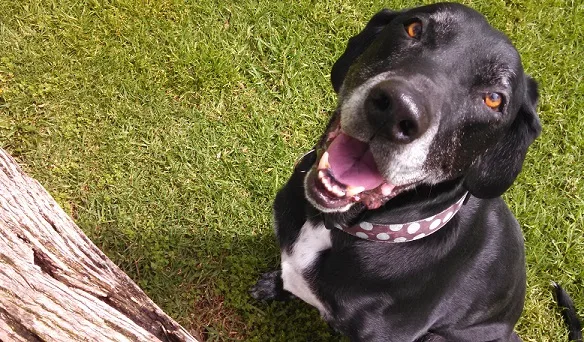
4. Change your routine to block or prevent the behavior
It’s easier to prevent your dog from biting the leash that trying to stop it once it’s happening. For example, my dog Remy will bite the leash as I’m trying to put it on him.
To prevent this, I just send him to his kennel for a treat. Then I easily put the leash on him while he’s in his kennel and much calmer.
5. Take it in stride
If your dog’s biting the leash is not a big problem and it’s just something “fun” she does for a few seconds, perhaps it’s nothing to worry about.
My dog tries to bite me when I put his leash on
If your dog is mouthing your hands or nipping at you when you try to pus his leash on, he is most likely acting out of excitement and impatience.
For example, my own dog will mouth at me when I put his harness on him. He doesn’t particularly enjoy wearing a harness and he also gets impatient with me.
To solve this problem, I trained him to sit for a treat. Then, I’d put his harness on him and give another small treat. At first, I would give a few small treats while in the process of putting the harness on.
All of these things helped make a positive association with the harness and teach my dog if he would just sit still, he would get a treat.
You can do the same while putting on your dog’s leash or other gear.
If your dog is truly showing aggression, growling and trying to harm you, then he may be afraid to go for walks, afraid of you or in pain. Please consult with a trainer or vet if you suspect any of these possibilities.
My puppy bites when putting on the leash
This is common for puppies! You can use the same approach as above. Ask your puppy to sit. Give a treat. Then clip the leash on and give another treat. This will teach your puppy to be patient.
A lot of puppies will then start biting at the leash once the leash is on! They’re simply playing and learning about the rules. Following some of the tips mentioned previously in this article such as using a chain leash or bitter apple spray.
Reward with treats or praise when your puppy is being good and doing what you want her to do.
My dog chews through his leash
If your dog is chewing through his leash, I recommend you try either a chain leash or a cable chew proof leash. I would also consider the bitter apple spray product.
Obviously, I would not recommend leaving your dog tethered unattended if he has the ability or habit of chewing through his leash. It’s better to leave your dog indoors, in a crate or in a fenced area when you can’t supervise.
OK, now I’d love to hear from you …
In the comments, let me know what suggestions or questions you might have. It’s very helpful for others to hear from a variety of people.
How would you stop a dog or puppy from biting the leash?
Let me know in the comments!
-Lindsay
Related articles:
*Enjoying this article? Get realistic dog training tips emailed once a week. Click Here
Lindsay Stordahl is the founder of That Mutt. She writes about dog training, dog exercise and feeding a healthy raw diet.
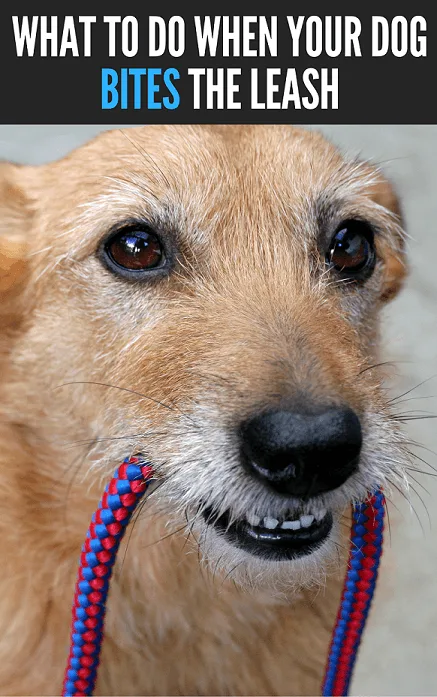

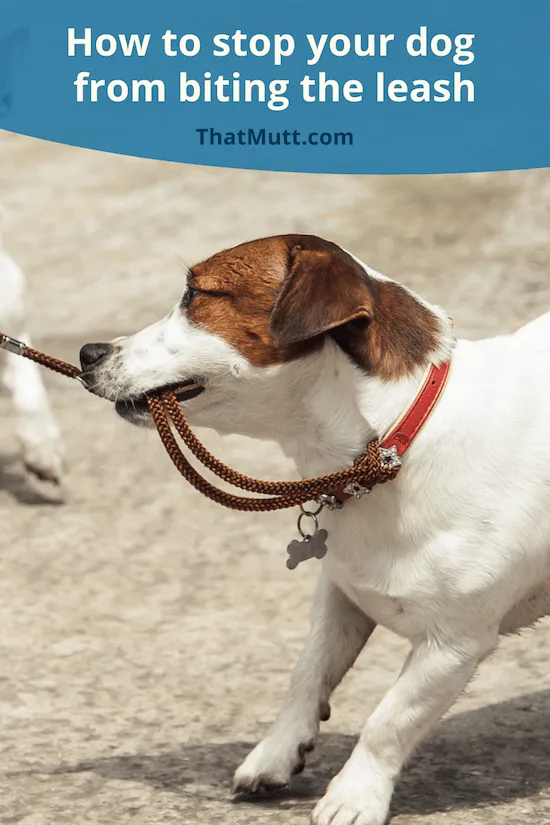
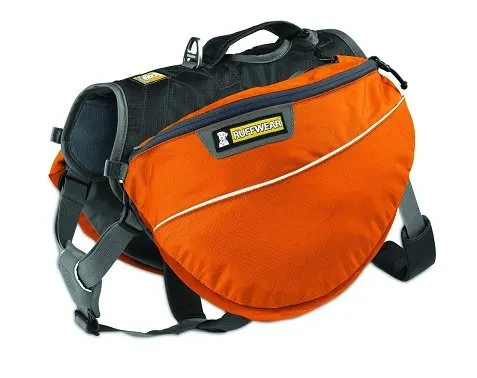

Heather and Mars
Tuesday 21st of November 2023
My Boxer-Staffie cross is 19 months old, a boy with all his bits, almost 40kg. He walks beautifully 80% of the time, but on most walks (approx 3 hours a day on lead) we encounter problems. He gets over-excited or frustrated by the lack of fun and starts extreme lead-ragging, jumping at the handle repeatedly (my hands are covered in bruises and gloves make it worse), jumping up on me and using me as a spring board. I know it's not aggression but it looks savage to passers by and it's embarrassing. Most of the time he's a lovely, sweet boy. He's not food-orientated so treats don't work, toys don't work, once this starts it's a battle just to stay on my feet and I just pray it stops quickly, mainly as it's so embarrassing. This behaviour is very predictable so I try to avoid triggering situations and places, although I don't want him to miss out on fun or socialisation. If he spots a dog coming towards him, even on the opposite side of the street, he lays down and waits patiently, hoping they will say hello. If they do, he is very polite and does all the right things - gentle sniffing and a little play if the other dog is up for it - but he doesn't want the experience to end so once the dog goes away he starts lead-ragging to create his own fun. If the other dog doesn't approach to say hello, he gets frustrated because he's missed out and again creates his own fun. When he sees kids playing but obviously can't join in, lead-ragging is guaranteed. Also sometimes when he doesn't want to come home after a walk (I have tried changing route so he doesn't realise he's nearly home but he's too clever). This also happens in spots where there aren't any triggers, but he associates with fun experiences in the past, e.g. outside houses where people sometimes fuss him. I have purchased a muzzle as I'm fed up of dealing with this, but haven't used it yet as I don't want him to miss out on the fun he craves because people might be scared to approach him. I was hoping I could use the muzzle as a training tool just for part of the walk perhaps. Or maybe it's not necessary but I have tried everything else I can think if. This has been going on a long time and I've tried numerous leads, harnesses, halti, and figure of eight he's on now. Any help appreciated, apologies for long message!
Carmel
Tuesday 31st of January 2023
I have a 4 month old lab puppy. I used to walk him every morning and play with him. He would sit on my lap after dinner and I would gently rub his gums and brush his coat. He was perfect. Now he bites me and jumps on me. I have tried freezing turning around saying no even taping his nose. I can’t walk away because he stays on me. Yesterday morning I tried to walk him. We got outside and he kept biting me and shredded my clothes I was wearing. Now I’m afraid of him. Has anyone else gone through this. My clothes were strings and my whole body is a bloody mess. I don’t know how to get past this.
kim
Wednesday 5th of October 2022
My almost two year old doodle seems to be getting worse jumping up and biting her lease and sometimes our hands. I do not think she means to hurt anyone - but she did do it at daycare and needless to say they were not happy - any suggestions - Could she just be overly excited - My husband likes to rough house with her - not sure if this is a good idea. He likes to move his hands and let her pounce on them with her mouth.
Jessica Riedel
Saturday 17th of July 2021
I have a 5yo American bully and he is is horrible on a leash. He goes crazy when he sees me go for his leash, which is a chain leash to try to stop the biting, but he goes for the handle. He literally will attack the leash and jump on me, or my husband. To others is is scary, but he isn’t doing it to be aggressive. I’m going to try a few things I saw on here, but he is so hard headed and we cannot snap him out of it. I’ve tried treats, balls (his favorite) and he doesn’t care. Sometimes I can get him to calm down but I don’t know how to stop it. He cannot run to play fetch because he is extremely crazy when trying to catch the ball, which has led to minor issues with ligament. If I could walk him I think it would be much better. I’m just lost with it all, and training is SO expensive around here. Any other suggestions I can get from anyone?
Shannon
Tuesday 15th of June 2021
We have. 5 month old chocolate lab. We have had him since he was 8 weeks. We did puppy kindergarten and are signed up for a basic training class in a few weeks. Scout is good on the leash 90% of the time but sometimes when we are in the yard on a leash or on a walk he will all of a sudden jump up and start biting at the leash then at me. He will growl when he has the leash in his mouth. I try to step on the leash but sometimes I can’t get a hold of it. I try saying sit and giving a treat but that doesn’t work either It scares me when he does this and I know I get worked up. I can’t figure out why he is doing this. He is great with other dogs and kids. Any help would be appreciated!
Lindsay Stordahl
Tuesday 15th of June 2021
It's hard to say but sounds like he's either playing or doesn't want to walk at that point due to boredom. I would try a chain leash for a few weeks. Most don't like to bite the chain.
Also take note of when he's doing this (time of day) and how long into the walk. Look for patterns. He might be extra wound up at that time of day or even overly tired. Many puppies act up in both situations and sometimes it's hard to tell if they're overly tired or haven't had enough exercise. Hang in there, 5 months is a wild age! It gets better.